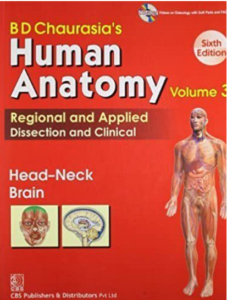Pathology Renal MCQs: In the world of pathology, understanding the intricate details of kidney diseases is crucial for medical students and practitioners alike. Chapter 20 of Anthony Chang, Zoltan G. Laszik authoritative text on “The Kidney” provides an in-depth look into various diseases and conditions affecting the kidney, with a significant focus on renal cancer. This blog aims to break down this chapter into accessible sections, making it easier for students to navigate and study the material, especially when dealing with MCQs (Multiple Choice Questions).
Chapter Overview
Chapter 20 is divided into ten comprehensive sections, each addressing different aspects of kidney pathology. From congenital anomalies to malignant tumors, this chapter covers it all. Total MCQs are 423 and here’s a detailed look at each section:
Section 1: Renal MCQs-1
Topics Covered
- Clinical Manifestations of Renal Diseases
- Glomerular Diseases
- Structure of the Glomerulus
Total MCQs: 15
Summary:
This section covers the clinical manifestations of renal diseases, types of glomerular diseases, and the structure of the glomerulus. It includes 15 multiple-choice questions to test understanding. Key points include the presentation and complications of renal diseases, an overview of primary and secondary glomerular diseases, and detailed information on glomerular anatomy and function. Additionally, the section discusses congenital and developmental kidney anomalies such as renal agenesis and horseshoe kidney, focusing on their embryological basis and clinical implications.
Section 2: Renal MCQs-2
Topics Covered:
- Pathologic Responses of the Glomerulus to Injury
- Hypercellularity
- Basement Membrane Thickening
- Hyalinosis and Sclerosis
Total MCQs: 20
Summary:
This section delves into the pathological responses of the glomerulus to injury, covering hypercellularity, basement membrane thickening, and hyalinosis and sclerosis. With 20 multiple-choice questions, it evaluates understanding. Topics include the reactions of glomeruli to injuries, increased cell proliferation, changes in the basement membrane, and the accumulation of hyaline material leading to sclerosis. Understanding these processes is crucial for diagnosing and managing glomerular diseases effectively.
Section 3: Renal MCQs-3
Topics Covered:
Pathogenesis of Glomerular Injury
- Diseases Caused by in Situ Formation of Immune Complexes
- Disease Caused by Antibodies Directed Against Normal Components of the Glomerular Basement Membrane
- Glomerulonephritis Resulting From Deposition of Circulating Immune Complexes
- Mechanisms of Glomerular Injury Following Immune Complex Formation
- Cell-Mediated Immunity in Glomerulonephritis
- Activation of Alternative Complement Pathway
- Mediators of Glomerular Injury
- Epithelial Cell Injury
- Mechanisms of Progression in Glomerular Diseases
- Tubular Injury and Interstitial Fibrosis
Total MCQs: 55
Summary:
This section provides an extensive exploration of glomerular injury and associated diseases, featuring 55 multiple-choice questions. Key topics include the pathogenesis of glomerular injury, diseases caused by immune complex formation, autoimmune disorders targeting the glomerular basement membrane, and glomerulonephritis resulting from immune complex deposition. Mechanisms of injury, including cell-mediated immunity, complement pathway activation, and epithelial cell injury, are discussed alongside factors driving disease progression and complications such as tubular injury and interstitial fibrosis. This comprehensive overview enhances understanding of glomerular pathophysiology and its clinical manifestations.
Section 4: Renal MCQs-4
Topics Covered:
Nephritic Syndrome
- Acute Proliferative (Postinfectious and Infection-Associated) Glomerulonephritis
- Crescentic (Rapidly Progressive) Glomerulonephritis
Nephrotic Syndrome
- Membranous Nephropathy
- Minimal Change Disease
- Focal Segmental Glomerulosclerosis
- HIV-Associated Nephropathy
- Membranoproliferative Glomerulonephritis
- Secondary Membranoproliferative Glomerulonephritis
- Fibrillary Glomerulonephritis
- Dense Deposit Disease
Total MCQs: 60
Summary:
This section comprises 60 multiple-choice questions focusing on nephritic and nephrotic syndromes. It covers various disorders under each syndrome category, including their clinical presentations, pathophysiology, and management. Key topics include acute proliferative and crescentic glomerulonephritis for nephritic syndrome, and membranous nephropathy, minimal change disease, and several other forms for nephrotic syndrome. This extensive coverage aids in understanding the diverse spectrum of renal disorders and their diagnostic considerations.
Section 5: Renal MCQs-5
Topics Covered:
Other Glomerular Diseases
- IgA Nephropathy (Berger Disease)
- Hereditary Nephritis
- Alport Syndrome
- Thin Basement Membrane Nephropathy (Benign Familial Hematuria)
Glomerular Lesions Associated With Systemic Diseases
- Lupus Nephritis
- Henoch-Schönlein Purpura
- Diabetic Nephropathy
- Other Systemic Disorders
Total MCQs: 46
Summary:
This section covers a range of other glomerular diseases, encompassing IgA nephropathy (also known as Berger disease), hereditary nephritis, Alport syndrome, and thin basement membrane nephropathy (commonly referred to as benign familial hematuria). It also explores glomerular lesions associated with systemic diseases, including lupus nephritis, Henoch-Schönlein purpura, and diabetic nephropathy. Furthermore, the section addresses glomerular involvement in various systemic disorders. With a total of 46 multiple-choice questions, users have the opportunity to test their knowledge multiple times at no cost, gaining insights into the clinical presentations, pathophysiology, and management strategies for these diverse glomerular conditions.
Section 6: Renal MCQs-6
Topics Covered:
Tubular and Interstitial Diseases
Acute Tubular Injury/Necrosis
Tubulointerstitial Nephritis
Pyelonephritis and Urinary Tract Infection
- Acute Pyelonephritis
- Chronic Pyelonephritis and Reflux Nephropathy
Tubulointerstitial Nephritis Induced by Drugs and Toxins
- Acute Drug-Induced Interstitial Nephritis
Total MCQs: 40
Summary:
This section focuses on tubular and interstitial diseases, encompassing acute tubular injury/necrosis, tubulointerstitial nephritis, and pyelonephritis/urinary tract infection. It delves into acute pyelonephritis, chronic pyelonephritis/reflux nephropathy, and tubulointerstitial nephritis induced by drugs and toxins, including acute drug-induced interstitial nephritis. These conditions involve inflammation, infection, and toxic insults affecting the tubules and interstitium of the kidneys. Understanding their etiology, clinical manifestations, and management strategies is crucial for accurate diagnosis and effective treatment.
Section 7: Renal MCQs-7
Topics Covered:
Other Tubulointerstitial Diseases
- Urate Nephropathy
- Hypercalcemia and Nephrocalcinosis
- Autosomal Dominant Tubulointerstitial Kidney Disease
- Light-Chain Cast Nephropathy (“Myeloma Kidney”)
- Bile Cast Nephropathy
Total MCQs: 29
Summary:
This section explores additional tubulointerstitial diseases, including urate nephropathy, hypercalcemia and nephrocalcinosis, autosomal dominant tubulointerstitial kidney disease, light-chain cast nephropathy (often referred to as “myeloma kidney”), and bile cast nephropathy. These conditions involve various pathological mechanisms such as urate crystal deposition, calcium accumulation, genetic factors, and the presence of abnormal protein casts in the kidneys. Understanding these diseases is essential for their accurate diagnosis and management, considering their diverse etiologies and clinical presentations.
Section 8: Renal MCQs-8
Topics Covered:
Vascular Diseases
Nephrosclerosis
Renal Artery Stenosis
Thrombotic Microangiopathies
- Typical (Epidemic, Classic, Diarrhea-Positive) Hemolytic Uremic Syndrome
- Atypical (Non-Epidemic, Diarrhea-Negative) Hemolytic Uremic Syndrome
- Thrombotic Thrombocytopenic Purpura
Other Vascular Disorders
- Atherosclerotic Ischemic Renal Disease
- Atheroembolic Renal Disease
- Sickle Cell Nephropathy
- Renal Infarcts
Total MCQs: 58
Summary:
This section covers various vascular diseases affecting the kidneys, including nephrosclerosis, renal artery stenosis, and thrombotic microangiopathies. Within thrombotic microangiopathies, it explores typical (epidemic, classic, diarrhea-positive) hemolytic uremic syndrome, atypical (non-epidemic, diarrhea-negative) hemolytic uremic syndrome, and thrombotic thrombocytopenic purpura. Additionally, it addresses other vascular disorders such as atherosclerotic ischemic renal disease, atheroembolic renal disease, sickle cell nephropathy, and renal infarcts. Understanding these conditions is vital for accurate diagnosis and appropriate management, considering their diverse etiologies and clinical presentations.
Section 9: Renal MCQs-9
Topics Covered:
Congenital and Developmental Anomalies
Cystic Diseases of the Kidney
Autosomal Dominant (Adult) Polycystic Kidney Disease
Autosomal Recessive (Childhood) Polycystic Kidney Disease
Cystic Diseases of the Renal Medulla
- Medullary Sponge Kidney
- Nephronophthisis
Multicystic Renal Dysplasia
Acquired Cystic Disease
Simple Cysts
Total MCQs: 50
Summary:
This section explores congenital and developmental anomalies affecting the kidneys, focusing on cystic diseases. It covers autosomal dominant (adult) polycystic kidney disease, autosomal recessive (childhood) polycystic kidney disease, and cystic diseases of the renal medulla, including medullary sponge kidney, nephronophthisis, multicystic renal dysplasia, and acquired cystic disease. Additionally, it addresses simple cysts, which can occur as acquired conditions. Understanding these anomalies is crucial for their recognition, diagnosis, and management, given their potential impact on kidney function and overall health.
Section 10: Renal MCQs-10
Topics Covered:
Urinary Tract Obstruction (Obstructive Uropathy)
Urolithiasis (Renal Calculi, Stones)
Neoplasms of the Kidney
Benign Neoplasms
- Renal Papillary Adenoma
- Angiomyolipoma
- Oncocytoma
Malignant Neoplasms
- Renal Cell Carcinoma
- Urothelial Carcinoma of the Renal Pelvis
Total MCQs: 50
Summary:
This final section covers urinary tract obstruction (obstructive uropathy), urolithiasis (renal calculi, stones), and neoplasms of the kidney. It includes both benign and malignant neoplasms. Benign neoplasms discussed are renal papillary adenoma, angiomyolipoma, and oncocytoma. Malignant neoplasms encompass renal cell carcinoma and urothelial carcinoma of the renal pelvis. Understanding these conditions is essential for their accurate diagnosis and appropriate management, given their potential impact on kidney function and overall patient health..
Utilizing This Chapter for MCQ Preparation
For students preparing for exams, MCQs based on this chapter can help reinforce key concepts. Each section’s summary provided here can serve as a quick reference guide. By understanding the core topics and their clinical implications, students can better tackle MCQs and apply this knowledge in clinical practice.
Tips for Effective Study
- Review Summaries: Use the section summaries to grasp the essential concepts quickly.
- Focus on High-Yield Topics: Pay extra attention to renal carcinoma types, risk factors, and diagnostic features.
- Visual Aids: Utilize diagrams and histology images to better understand the pathologic findings.
- Regular Practice: Consistently practice Pathology Kidney MCQs to test your understanding and retention.
By breaking down complex topics into manageable sections, this guide aims to simplify your study process and enhance your grasp of renal pathology. Happy studying!


